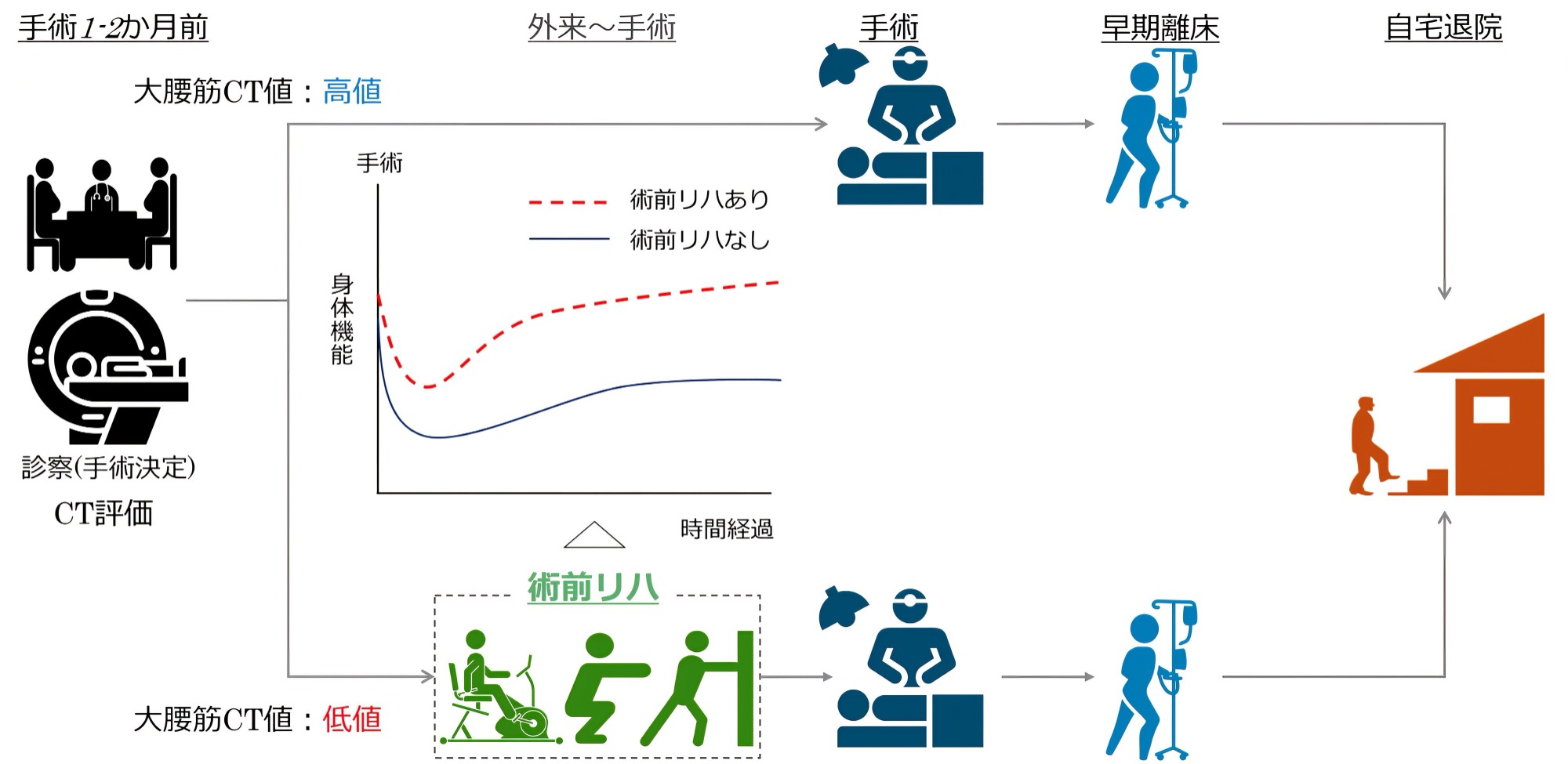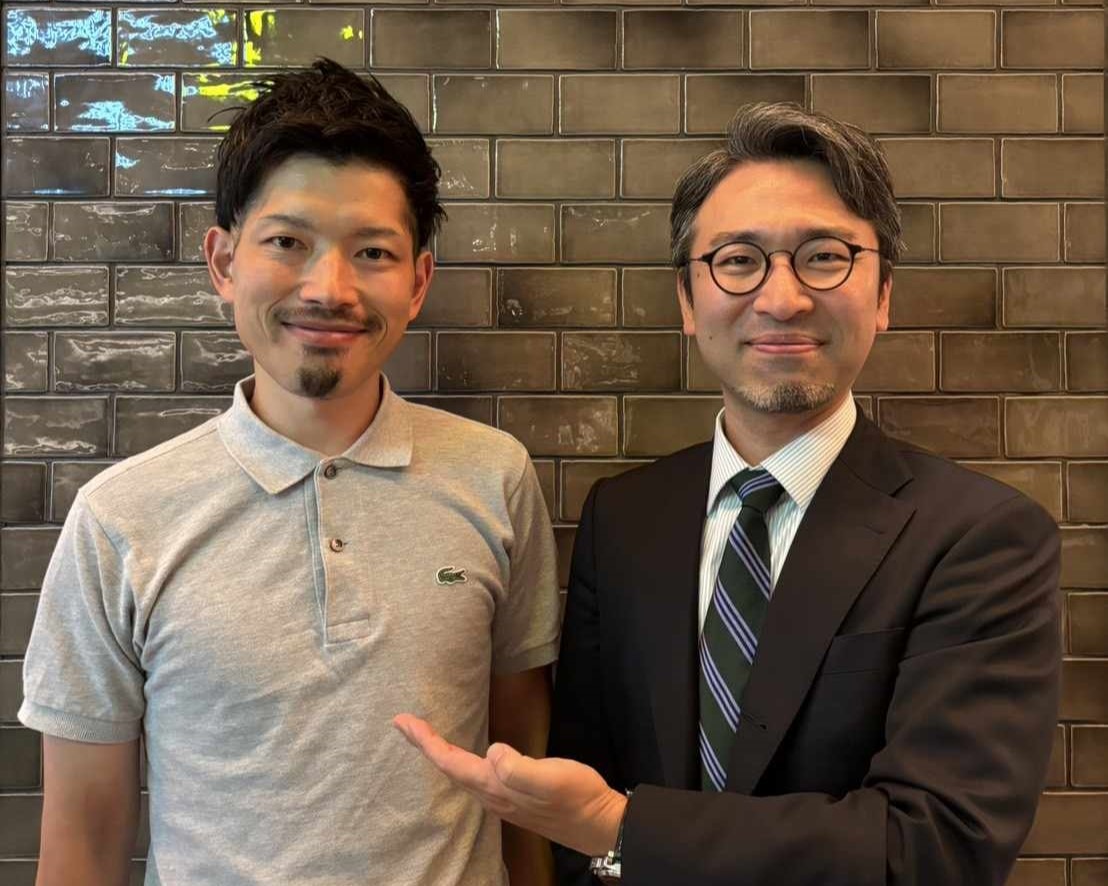Achievements
CT images can predict delays in regaining independent walking after cardiovascular surgery - Potential to be useful in determining suitability for preoperative treatment intervention
A research group including graduate student Kazuya Shimizu, lecturer Ryota Matsuzawa, and professor Akira Tamaki of the Department of Pathophysiology and Kinesiology, Graduate Graduate School of Rehabilitation Science Hyogo Medical University College of Medicine (Location: Nishinomiya City, Hyogo Prefecture; President: Keiichiro Suzuki) has demonstrated that muscle quality assessed by Computed Tomography (CT), a routine examination before cardiovascular surgery, is useful for predicting delays in regaining independent walking after surgery.
This research paper was published in the Journal of Cachexia, Sarcopenia and Muscle (2023 JOURNAL IF: 9.4).
Key points of this study
- Since delays in regaining independent walking after cardiovascular surgery can lead to longer hospital stays, higher mortality rates, and an increased risk of re-hospitalization, postoperative functional recovery is a top priority, especially for elderly patients.
- CT scans are routine tests before cardiovascular surgery, and they have been shown to be useful for identifying patients at risk of delayed regaining independent walking after surgery and for determining whether preoperative therapeutic intervention is appropriate.
Research Background
In Japan, more than 70,000 patients undergo cardiovascular surgery annually, and the number of elderly patients is also increasing due to the aging population. In elderly patients undergoing cardiovascular surgery, the prevalence of frailty (※1) is reported to be 25% to 50%, and the prevalence of sarcopenia (※2) is reported to be 19% to 27%. In such elderly patients, postoperative functional recovery is the most important issue. It has been reported that delay in acquiring independent walking after surgery leads to longer hospital stays and higher risks of mortality and re-hospitalization. In order to prevent such situations, it is important to identify high-risk patients early and correct them. However, it is practically difficult to identify high-risk patients before surgery due to various constraints, and even if they are identified immediately before surgery, there is no opportunity for correction.
Therefore, we decided to focus on skeletal muscle evaluation using existing CT images and evaluate their predictive ability for delays in independent walking after cardiovascular surgery. CT scans are routinely performed before cardiovascular surgery to understand the pathology and plan surgery, and in recent years have become the gold standard for evaluating the quantity and quality of skeletal muscle.
Research Methods and Results
The psoas muscle volume, an index of muscle mass, and the CT value, an index of muscle quality, were calculated from preoperative CT images of 139 patients who underwent elective cardiovascular surgery at a single institution. Delay in independent walking after surgery was defined as "inability to walk 100m within 4 days after surgery" based on the guidelines of the Japanese Circulation Society, which accounted for 47.5% of the study subjects. Receiver operating characteristic (ROC) analysis and logistic regression analysis were performed to evaluate the association between CT value and psoas muscle volume and delay in independent walking after surgery. The areas under the curve for CT value and psoas muscle volume calculated by ROC analysis were 0.78 and 0.69, respectively, confirming that CT value has moderate discriminatory ability. In addition, logistic regression analysis revealed that a decrease in CT value was associated with delay in independent walking after surgery, independent of patient background such as age, type of surgery, and renal function.
In this study, CT images taken one to two months before surgery were used, ensuring the necessary time for preoperative treatment. Therefore, CT scans may be useful in identifying patients who may be delayed in regaining independent walking after surgery, and in determining whether preoperative treatment is appropriate.
Future challenges
This study was an observational study conducted at a single institution, and further investigation with a larger number of cases is necessary. In addition, the number of cases was small, so it was not possible to analyze the data by type of surgery or disease. In the future, we believe it is necessary to increase the number of subjects and conduct analyses by subjects with different pathological conditions and postoperative management.
Publication information
Publication
Journal of Cachexia, Sarcopenia and Muscle (2023 JOURNAL IMPACT FACTOR : 9.4)
Paper title
Association of computed tomography‐derived muscle mass and quality with delayed acquisition independent walking after cardiovascular surgery
Author of the paper
Kazuya Shimizu (2nd year master's student, Department of Pathophysiology and Kinesiology (internal disorders), Graduate School Graduate School of Rehabilitation Science)
Ryota Matsuzawa (Lecturer Graduate School of Rehabilitation Science)
Akira Tamaki (Professor Graduate School of Rehabilitation Science) and others
Source of research funds
Hyogo Medical University Hospital
Glossary
*1 Frailty refers to an intermediate stage between a healthy state and a state requiring nursing care.
*2 Sarcopenia refers to the decrease in muscle mass and strength that occurs with aging.

